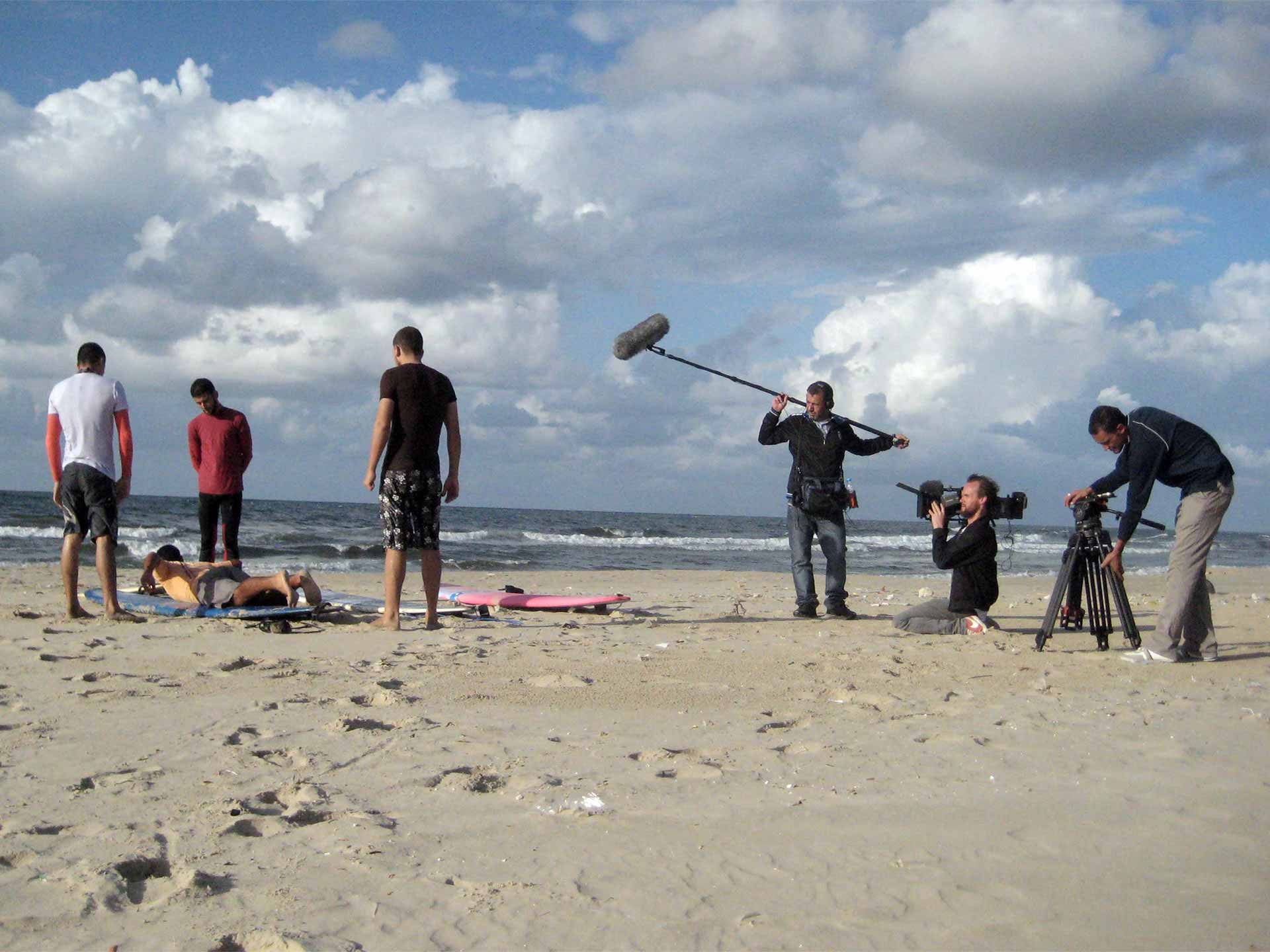When I first saw the trailer I was beside myself. Here seemed to be a film that ticked many of my particular cineastian boxes, namely a board-sport and a meaty subject matter, both drawn in a lyrical shooting style.
On then watching the film, I must admit to being somewhat slightly deflated. It seemed to be neither a surf film nor a heavyweight reportage documentary. Leaving the cinema I questioned why it might be that it was neither both but couldn’t come up with a suitable answer. As time passed I found myself not being able to let the film go. There was something to it but I couldn’t put my finger on it.
What was certain is that pictorially it was stunning, the cinematography was pitch-perfect, for either a surf film or a war documentary, it made the surroundings look truthful but also captivating and romantic. The soundtrack also set the scene and was suitably emotive for each type of scene depicted, be it packed with action or pathos. I felt that perhaps it was too successful in both of these areas to be considered a worthy theatrical documentary, in other words, style over content.
But as time passed I still couldn’t shake the film, it had got under my skin. I came to the realisation that it is this that cinema documentary has over its small-screen counterpart. That is not to say that TV docs can not be informative, educational, and moving but perhaps due to the sheer amount of content shared by the medium, an individual film becomes forgettable just because of the sheer amount of competition, no matter how polished a final product it is?
Perhaps due to the sheer amount of content shared by the medium, an individual film becomes forgettable just because of the sheer amount of competition?
Gaza Surf Club, as an example of a pure cinema doc, had a captivating topic, an engaging set of characters, and a packaging in its shooting, editing, and music that, via cinema, was given the space to breathe in both physical space and its running time. A cinema documentary can of course be observational and full of narrative content as well as empirical information but it can also be lyrical and moving in a way that TV cannot counter, the sheer act of going to the cinema and sitting down in a large physical space already has affected the audience and primed them ready so that their emotions are higher. Of course, a bad film can leave them even more deflated.
But in the case of Gaza Surf Club, we have a film that took its time to make a portrayal of a community and their lifestyle rather than make a piece of ‘news’. It is more like the camera pointing its gaze at the participants in an effort to leave an impression on the audience rather than fill them with pure fact and knowledge. As Einstein taught us, knowledge is limited but creativity is endless. In other words, information needs to be updated as things change but creativity or artistic endeavour is endless. This film shows that in action.
When you make a film about a difficult topic it seems like there is an unwritten law that you must be newsy and deal with it in a certain manner i.e give an impression of a balanced argument, be heavy on negativity, make a suggestion of fact and detail and talk in respectful hushed tones, all techniques that say to a Western Audience ‘how awful, The subtext being, ‘at least we don’t have to live like that!’
Films like Gaza Surf Club offer us a chance to see behind the headlines, making an argument for what we might call ‘factual art’ as being able to do something that standard news media can’t seem to achieve.
Films like Gaza Surf Club are a balance to these techniques. They offer us a chance to see behind the headlines, making an argument for what we might call ‘factual art’ as being able to do something that standard news media can’t seem to achieve. News can be emotional, sad, touching, even live with us after the fact but it somehow can’t affect the soul in the way that cinema documentary can.
While it is vastly different, the film that Gaza Surf Club most reminded me of was Mark Ford’s Sleep Furiously (2009), a film about a Welsh sheep farming community, another film that got deep into its subject with an objective gaze filtered through the very subjective means of artful cinematography and a moving soundtrack that perfectly accompanied the topic. All points that could also be used to describe Gaza Surf Club.
Films like this are documentary but they work in The art Film Mode to provide us with an impression of life, they do not voice the opinion that is biased either way. It is the filmmaker as conduit, as mediator and as mirror, not as a commentator or an all-knowing voice presenting its opinion as being better than the rest.

